Tag Archives: Physics
The Isomorphism of 3-Qubit Hadamards and E8
Click here for a PDF of my latest paper. This has been accepted by the arXiv as 2311.11918 (math.GR & hep-th) with an ancillary Mathematica Notebook here. These links have (and will continue to have) minor descriptive improvements/corrections that may not yet be incorporated into arXiv, so the interested reader should check back here for those. The prior related paper on THE ISOMORPHISM OF H4 AND E8 is referenced in the blog post here.
Abstract: This paper presents several notable properties of the matrix U shown to be related to the isomorphism between H4 and E8. The most significant of these properties is that U.U is to rank 8 matrices what the golden ratio is to numbers. That is to say, the difference between it and its inverse is the identity element, albeit with a twist. Specifically, U.U-(U.U)-1 is the reverse identity matrix or standard involutory permutation matrix of rank 8. It has the same palindromic characteristic polynomial coefficients as the normalized 3-qubit Hadamard matrix with 8-bit binary basis states, which is known to be isomorphic to E8 through its (8,4) Hamming code.
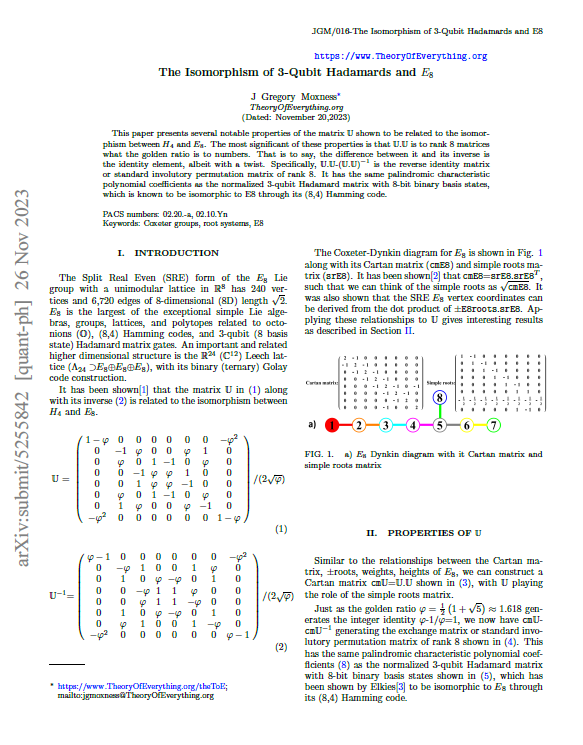
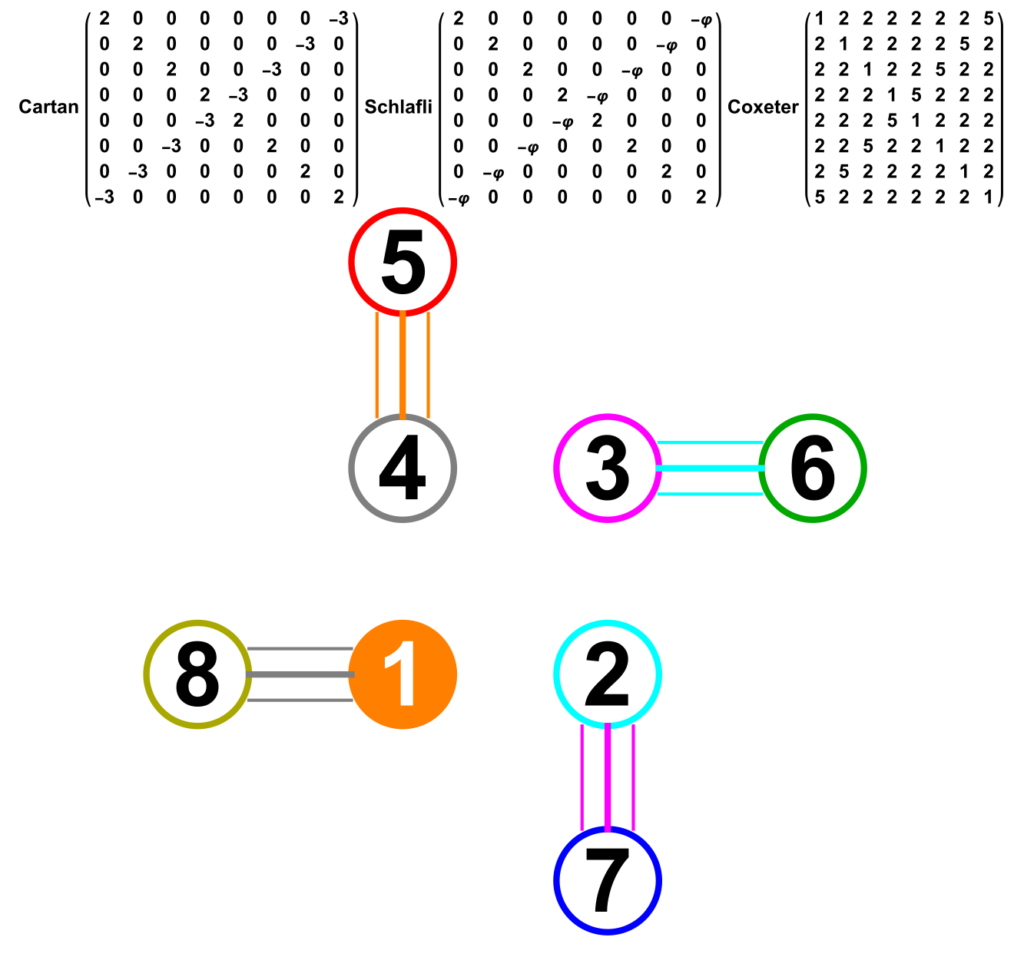
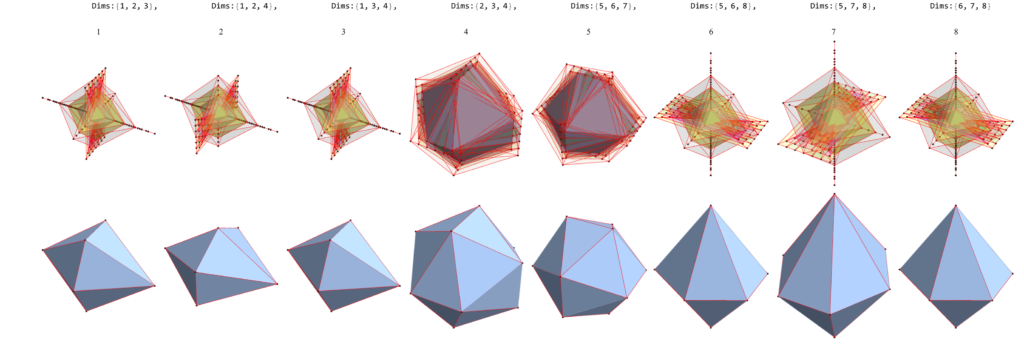
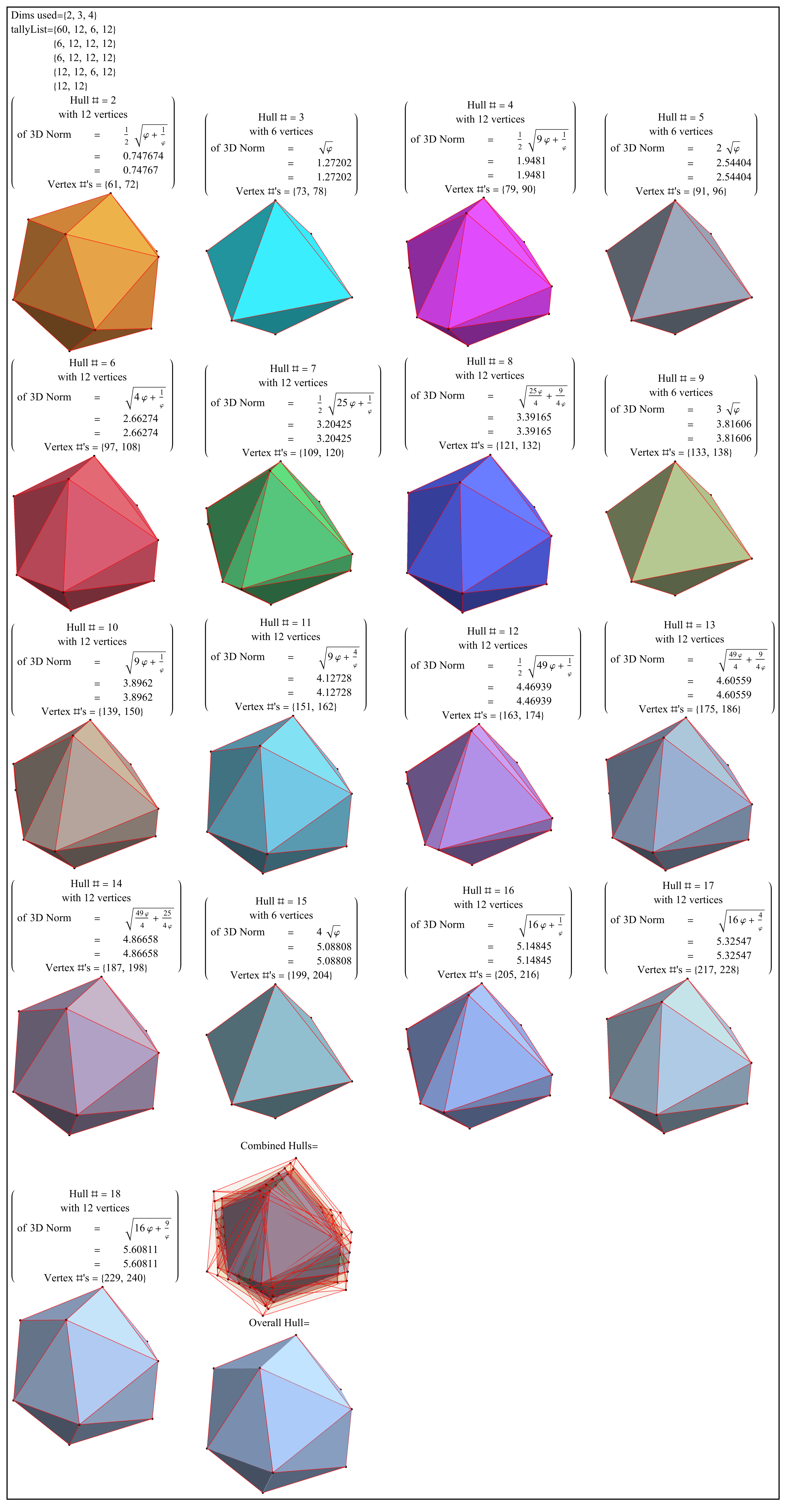
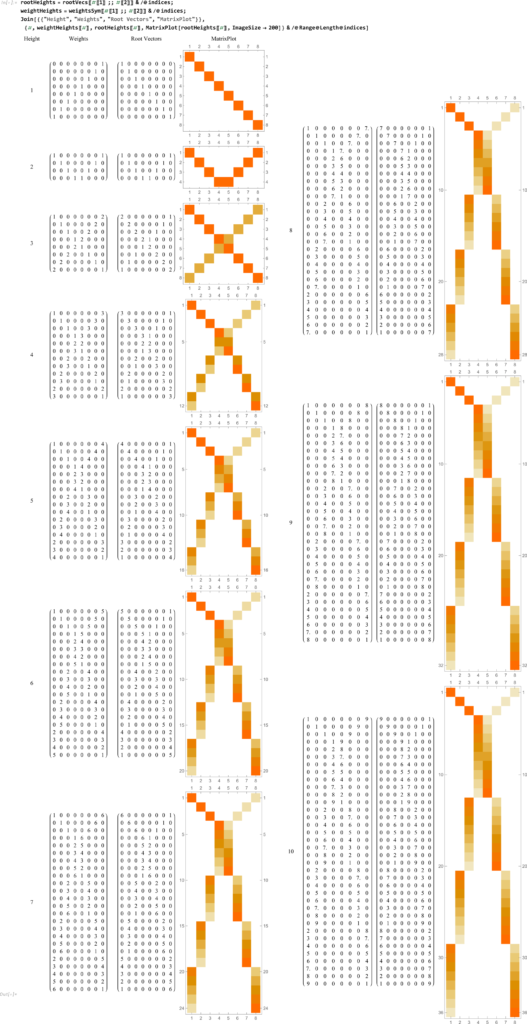

My patent for Rapid 3D prototyping and fabricating of slow-wave structures, including electromagnetic meta-material structures, for millimeter-wavelength and terahertz-frequency high-power vacuum electronic devices
A few years ago and 5 1/2 years after I retired, the patent I worked on with Andrey and Maysa finally made it through the US Patent Office!
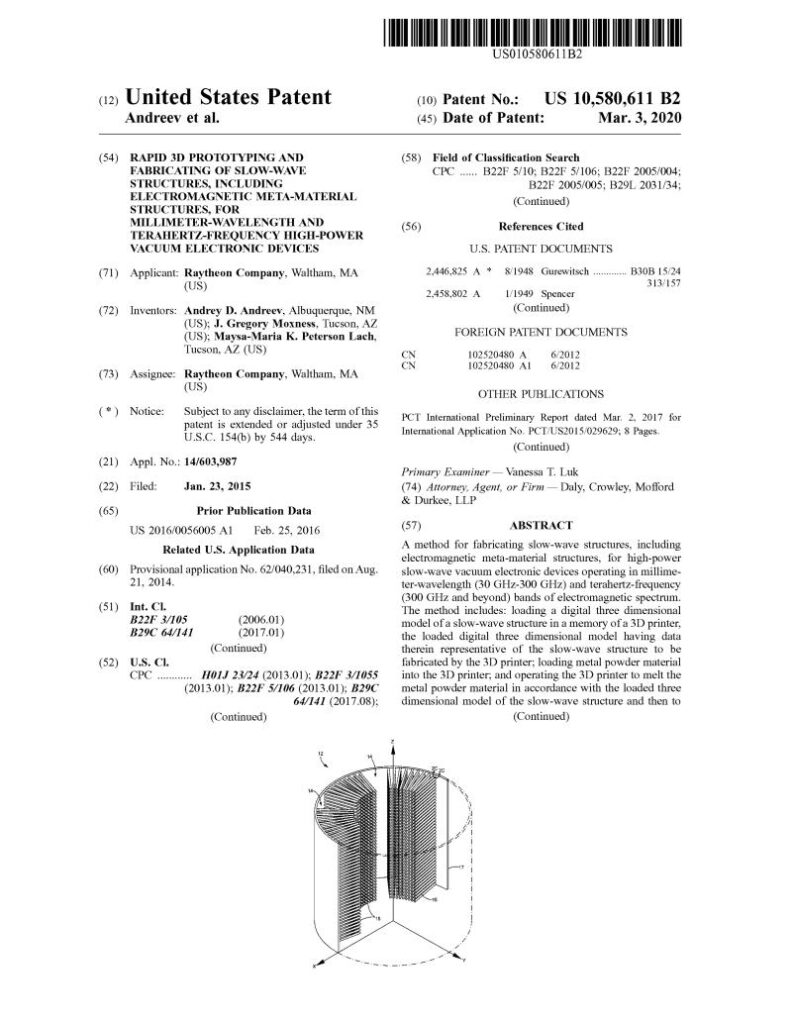
Info about my creative work: The Universe, Math, Physics, & Art
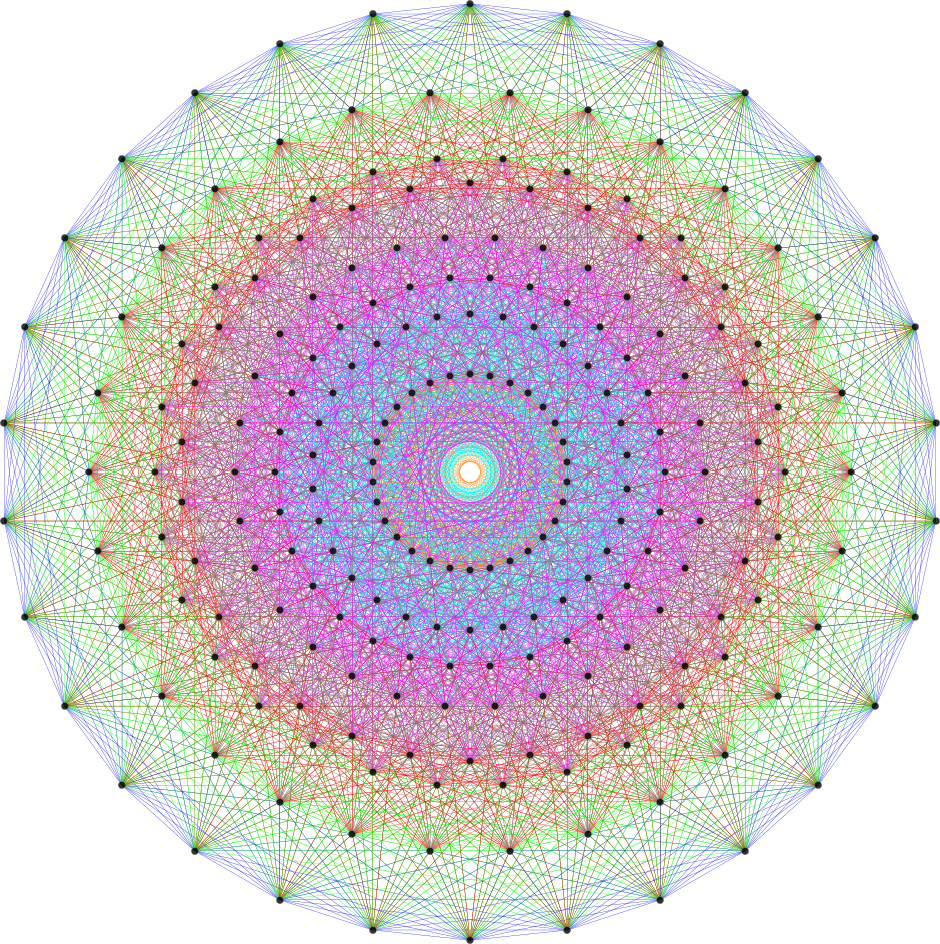
I think the most well-known (2D) image I’ve created so far (above) is found on Wikipedia’s (WP) math/geometry pages. It is what has been called the Public Relations (PR) or publicity photo for E8, which is an 8D (or 248 dimensional as the math guys count it) geometric object. It has been used in books, papers, math/science conference promotional materials, etc. That WP page also has what many used to consider “uninteresting” – my 3D versions of the same object. E8 is used in various theories to understand how the Universe operates way below the atomic level (i.e. the quantum stuff). I think it is responsible for what I call the shape of the Universe. As others have said, “who knew the Universe had a shape?”
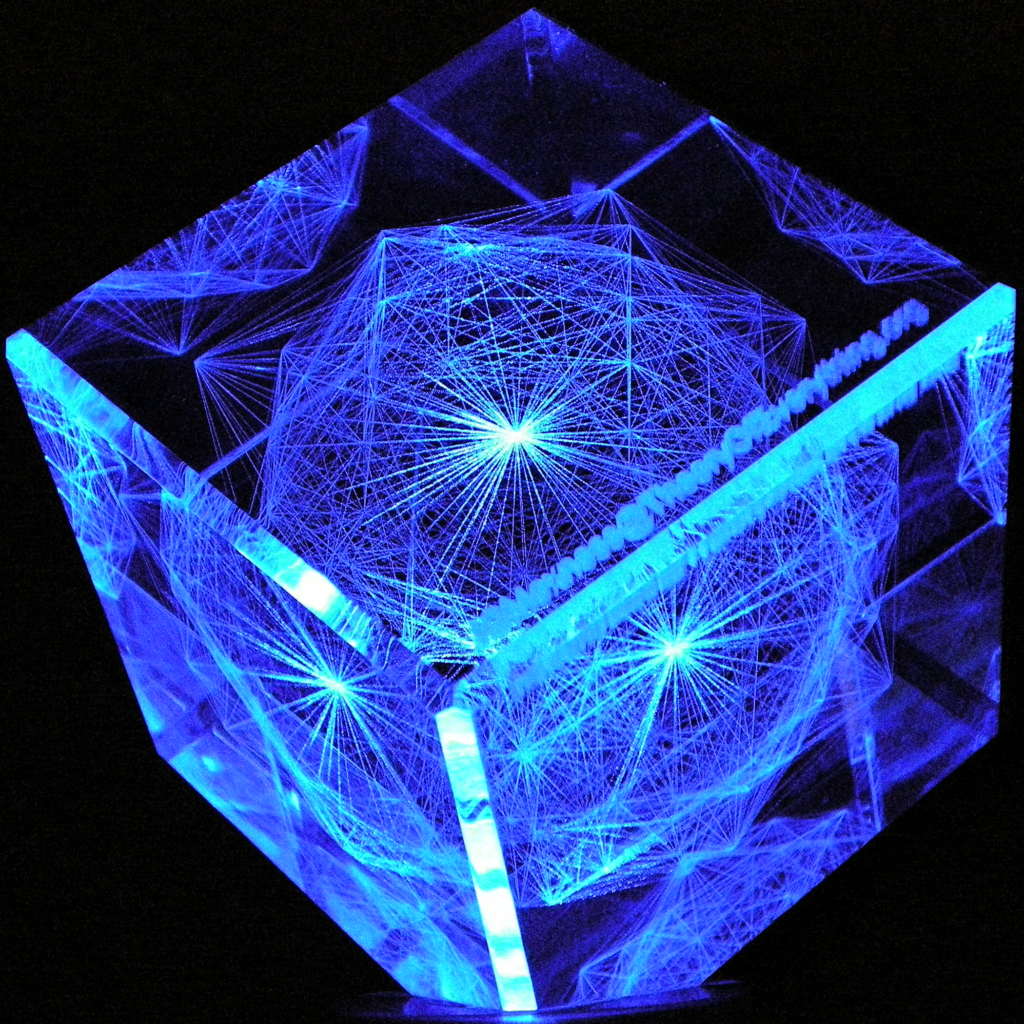
In (very) layman’s terms, that 2D image of E8 looks sort-of-like how the lowly 4D Tesseract cube would look if it grew up into an 8D object, but a bit more interesting. The Tesseract was made (more) popular in the modern Avengers movies. In 2015 before I had ever seen any of those movies, I created a laser etched 3D projection of E8 within a jewel cut optical crystal cube and put a photo of that object lit from below by a blue LED on my website’s main homepage. Someone mentioned the resemblance and I was surprised at the likeness, motivating me to go see the movies.
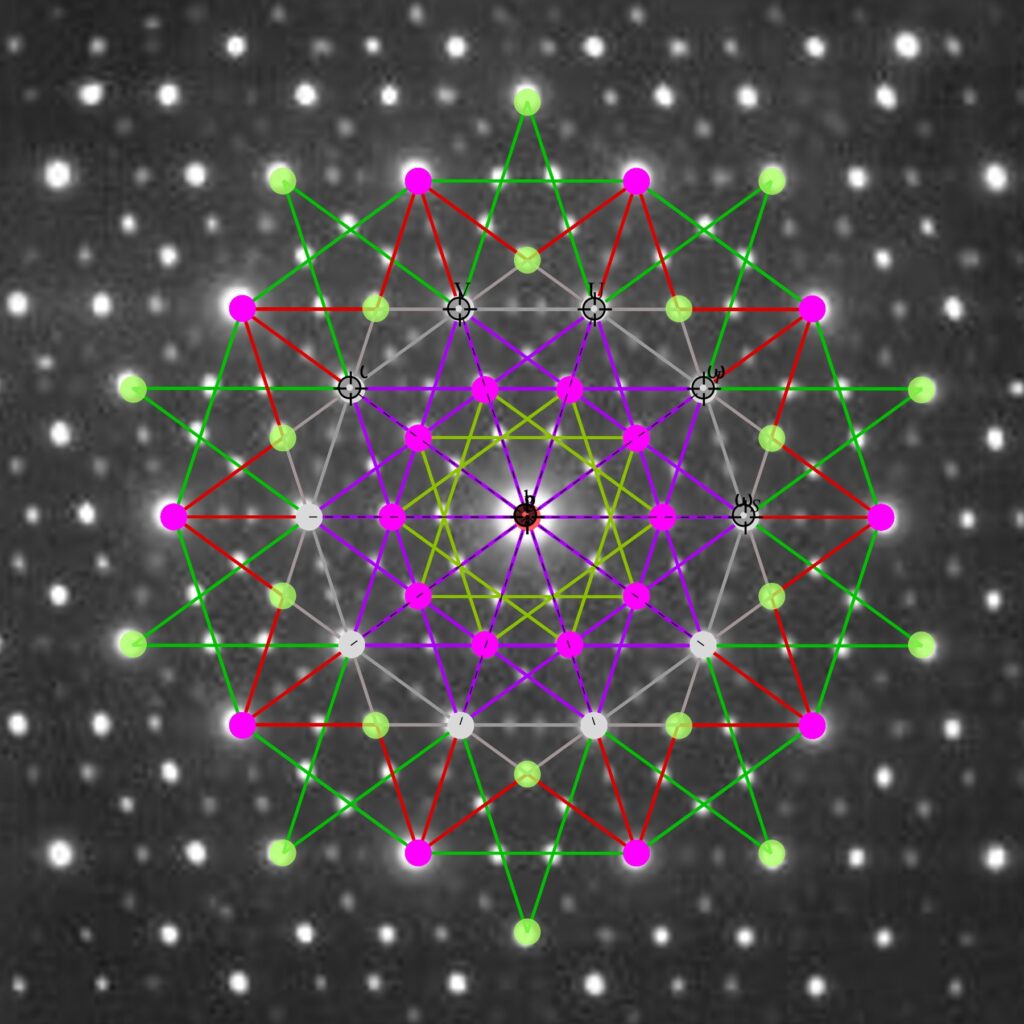
Another of my more notable math/physics images has to do with the discovery of QuasiCrystals made by a guy, Dan Shechtman, who was ostracized from academia for the “impossible” idea of crystals having rotational symmetries beyond 2,3,4 and 6. He is now a Nobel Laureate. The WP image above is on that QuasiCrystal page as an overlay of part of E8 projected over a picture made from shooting a beam of x-rays at an icosahedral Ho-Mg-Zn quasicrystal. I didn’t actually do that experiment with the x-ray beams, but I did similar ones in my college days on a particle accelerator called the Cockroft-Walton Kevatron – see below for a picture of me (the one with the beard ;–) in the physics lab assembling a moon dust experiment. One of the professors had gotten the accelerator out of Germany after having worked on the Manhattan project.
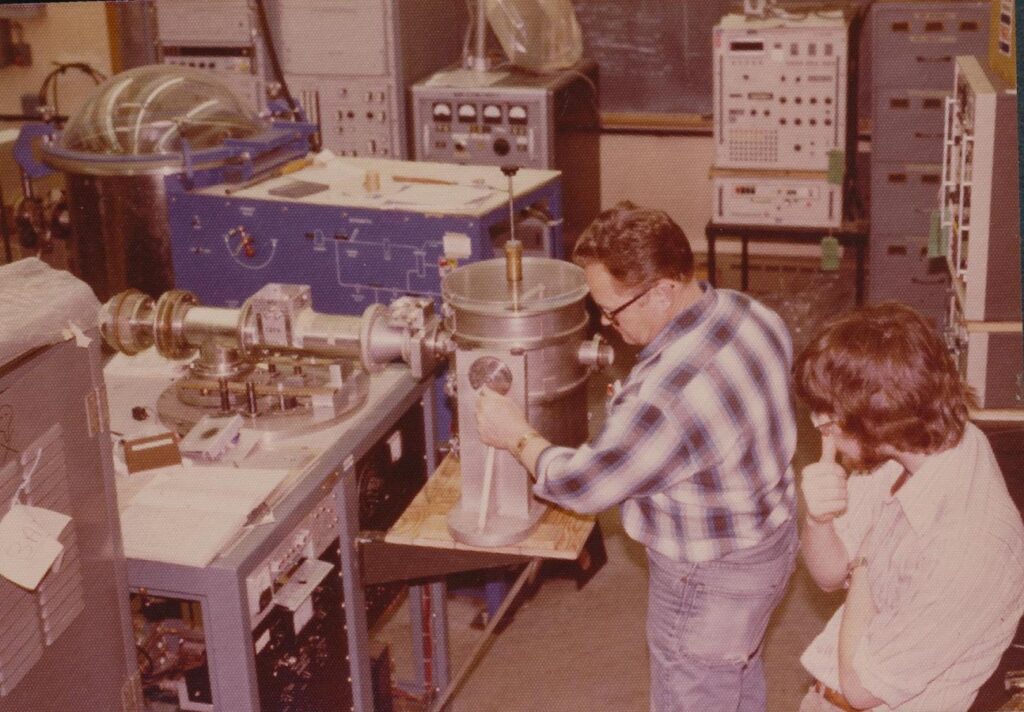
E8 and its 4D children, the 600-cell and 120-cell (pages on which I have some work, amongst others) and its grandkids (2 of the 3D 5 Platonic Solids, one of which is the 3D version of the 2D Pentagon) are all related to the Fibonacci numbers and the Golden Ratio. So that kind of explains why most of my 2D art, 3D objects and sculptures (e.g. furniture like the dodecahedron table below), and 4D youtube animations all use the Golden Ratio theme.

Greg Moxness, Tucson AZ
Interactive Cloud VisibLie-E8 4D Periodic Table
This is a link to the free cloud Mathematica demonstration. (Note: You need to enable “Dynamic Behavior” aka. interactivity in the upper left corner).

Please bear in mind that this demonstration is written for a full Mathematica licensed viewer. The cloud deployments are limited in interactivity, especially those that involve 3D and significant computation. Also, be patient – it takes a minute to load and more than a few seconds to respond to any mouse click interactions.
The utility of the cloud demo of this 4D (3D+color) Periodic Table is in visualizing it in 2D or 3D (from the left side menu) and building up n=1 to 8. Select the Stowe vs. Scerri display for different 3D models. The explode view slider helps distribute the lattices in the model.
The 2D/3D electron density representations for each atom’s orbitals are too slow for the cloud, so they don’t show anything. The isotope and list-picker of internet curated element data also does not function.
For an explanation of this pane #10 in the suite of 18 VisibLie-E8 demonstrations, please see this link.
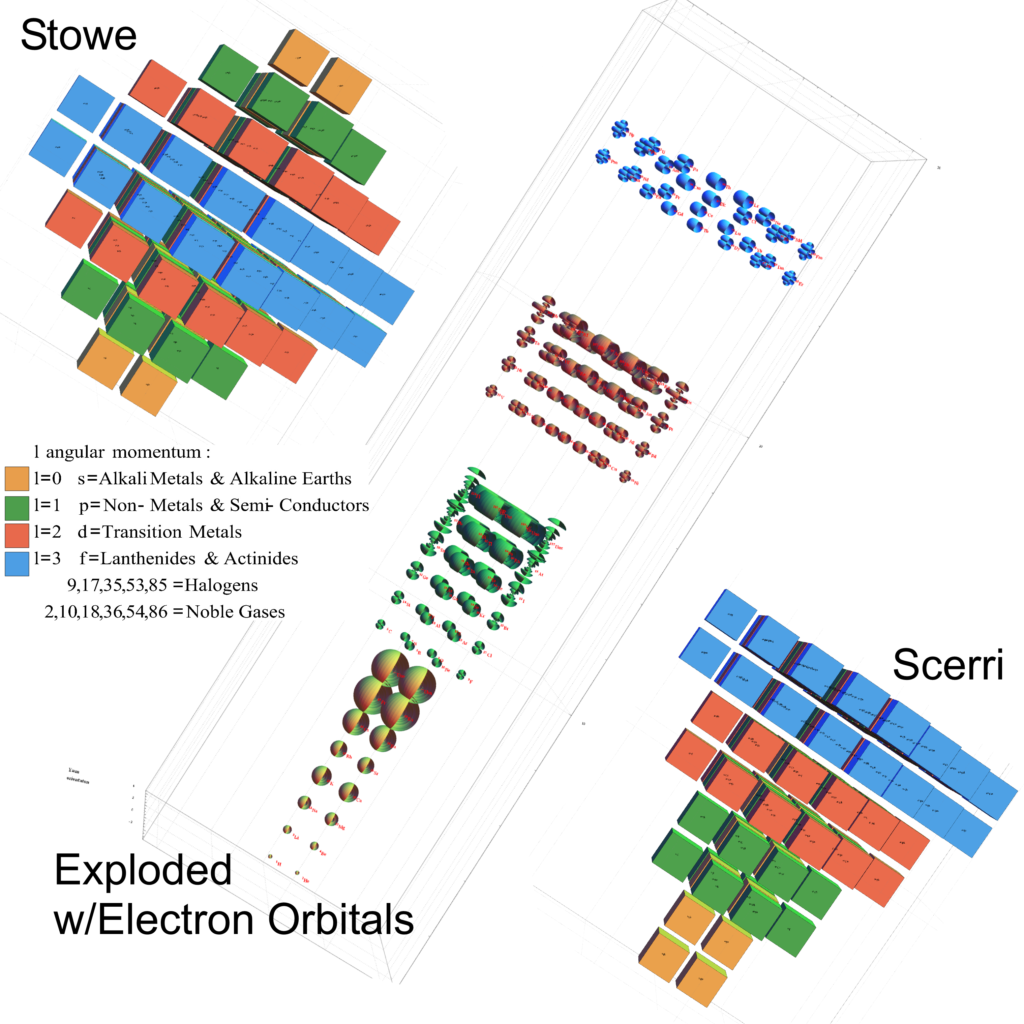
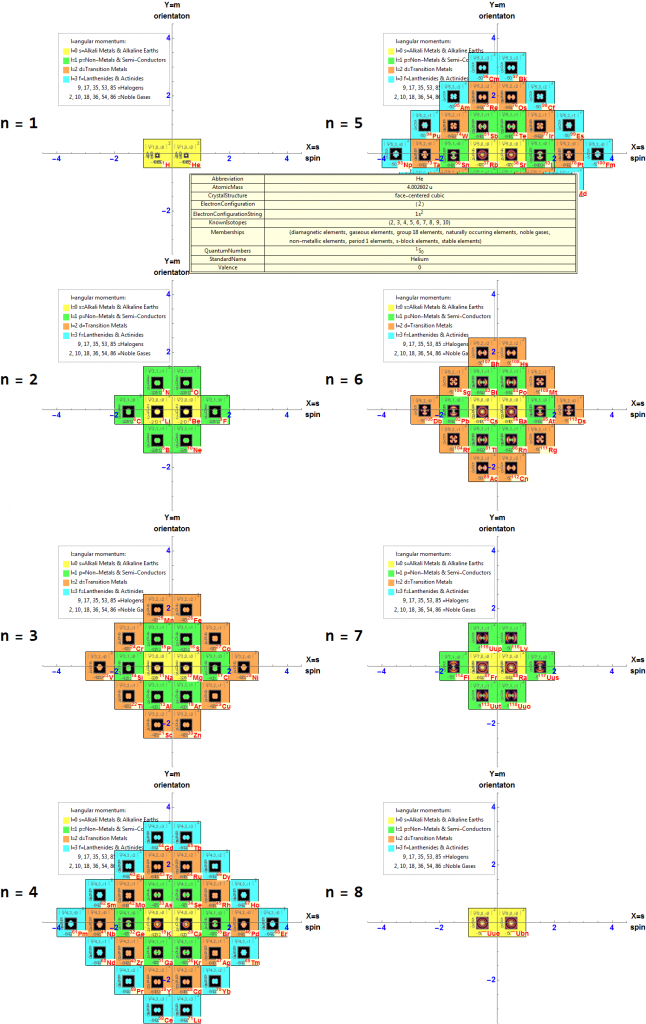
A Theory of Everything Visualizer, with links to free Cloud based Interactive Demonstrations:
1) Math: Chaos/Fibr/Fractal/Surface: Navier Stokes/Hopf/MandelBulb/Klein
2) Math: Number Theory: Mod 2-9 Pascal and Sierpinski Triangle
3) Math: Geometric Calculus: Octonion Fano Plane-Cubic Visualize
4) Math: Group Theory: Dynkin Diagram Algebra Create
5) Math: Representation Theory: E8 Lie Algebra Subgroups Visualize
6) Physics: Quantum Elements: Fundamental Quantum Element Select
7) Physics: Particle Theory: CKM(q)-PMNS(ν) Mixing_CPT Unitarity
8) Physics: Hadronic Elements: Composite Quark-Gluon Select Decays
9) Physics: Relativistic Cosmology: N-Body Bohmian GR-QM Simulation
10) Chemistry: Atomic Elements: 4D Periodic Table Element Select
11) Chemistry: Molecular Crystallography: 4D Molecule Visualization Select
12) Biology: Genetic Crystallography: 4D Protein/DNA/RNA E8-H4 Folding
13) Biology: Human Neurology: OrchOR Quantum Consciousness
14) Psychology: Music Theory & Cognition: Chords, Lambdoma, CA MIDI,& Tori
15) Sociology: Theological Number Theory: Ancient Sacred Text Gematria
16) CompSci: Quantum Computing: Poincare-Bloch Sphere/Qubit Fourier
17) CompSci: Artificial Intelligence: 3D Conway’s Game Of Life
18) CompSci: Human/Machine Interfaces: nD Human Machine Interface
Cloud Based VisibLie_E8 Demonstration
The cloud deployments don’t have all the needed features as the fully licensed Mathematica notebooks, so I included a few of the panes that seem to work for the most part. Some 3D and animation features won’t work, but it is a start. Bear in mind that the response time is slow.
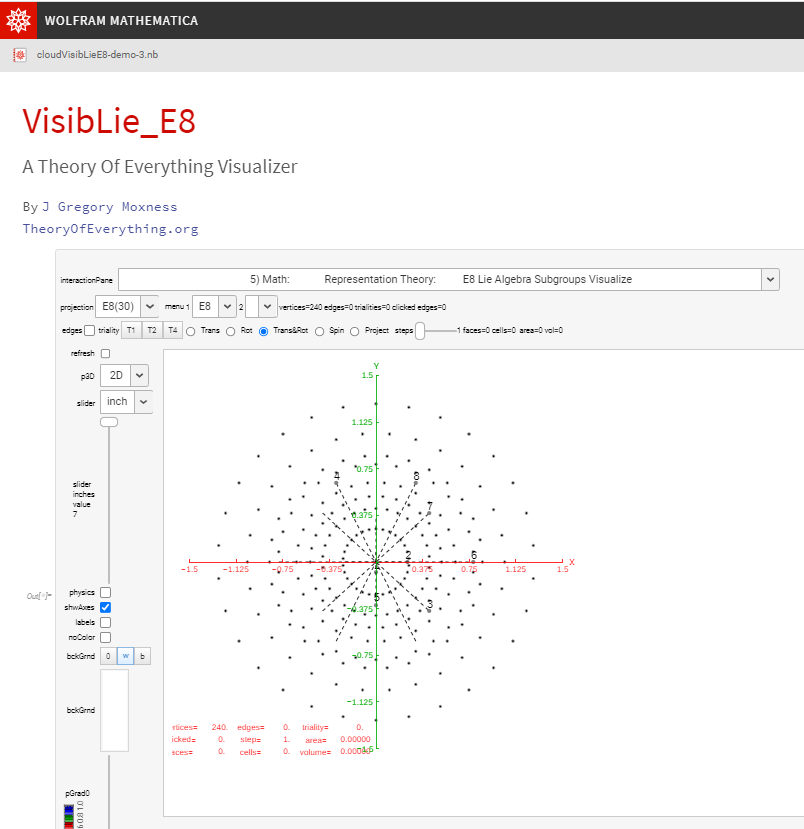
A Theory of Everything Visualizer, with links to free Cloud based Interactive Demonstrations:
1) Math: Chaos/Fibr/Fractal/Surface: Navier Stokes/Hopf/MandelBulb/Klein
2) Math: Number Theory: Mod 2-9 Pascal and Sierpinski Triangle
3) Math: Geometric Calculus: Octonion Fano Plane-Cubic Visualize
4) Math: Group Theory: Dynkin Diagram Algebra Create
5) Math: Representation Theory: E8 Lie Algebra Subgroups Visualize
6) Physics: Quantum Elements: Fundamental Quantum Element Select
7) Physics: Particle Theory: CKM(q)-PMNS(ν) Mixing_CPT Unitarity
8) Physics: Hadronic Elements: Composite Quark-Gluon Select Decays
9) Physics: Relativistic Cosmology: N-Body Bohmian GR-QM Simulation
10) Chemistry: Atomic Elements: 4D Periodic Table Element Select
11) Chemistry: Molecular Crystallography: 4D Molecule Visualization Select
12) Biology: Genetic Crystallography: 4D Protein/DNA/RNA E8-H4 Folding
13) Biology: Human Neurology: OrchOR Quantum Consciousness
14) Psychology: Music Theory & Cognition: Chords, Lambdoma, CA MIDI,& Tori
15) Sociology: Theological Number Theory: Ancient Sacred Text Gematria
16) CompSci: Quantum Computing: Poincare-Bloch Sphere/Qubit Fourier
17) CompSci: Artificial Intelligence: 3D Conway’s Game Of Life
18) CompSci: Human/Machine Interfaces: nD Human Machine Interface
My VisbLie E8 demonstration system for Mathematica v13
The newer version of the VisibLieE8-NewDemo-v13.nb (130 Mb) will work with those who have a full Mathematica v13 license. It is backward compatible to earlier versions. There are a few bug fixes from the older version of ToE_Demonstration.nb (130 Mb), which should work on v13 and older versions as well.
For more detail on the modules, see this blog post.
Please be patient, it is very large and can take 10 minutes to load, depending on your Internet connection, memory and CPU speed.
The free Wolfram CDF Player v. 13 works with my VisibLie E8 ToE demonstration on Win10
In case you’re interested, I just verified the demo works on the free Mathematica CDF player v.13 for Win10.
Just go to https://www.wolfram.com/player/ install, download and open the app:
https://theoryofeverything.org/TOE/JGM/ToE_Demonstration.nb
There is a ton of other cool interactive stuff in there. FYI – Some features don’t work without a full Mathematica license.
Enjoy.
12-fold Symmetric Quasicrystallography from affine E6, B6, and F4
This post is an analysis of a June 2013 paper by Mehmet Koca, Nazife Koca, and Ramazan Koc. That paper contains various well-known Coxeter plane projections of hyper-dimensional polytopes as well as a new direct point distribution of the quasicrystallographic weight lattice for E6 (their Figure 3), as well as the quasicrystal lattices of B6 and F4.

What is interesting about this projection is that it precisely matches the point distribution (to within a small number of vertices) from a rectified E8 projection using a set of basis vectors I discovered in December of 2009, published in Wikipedia (WP) in February of 2010 here.
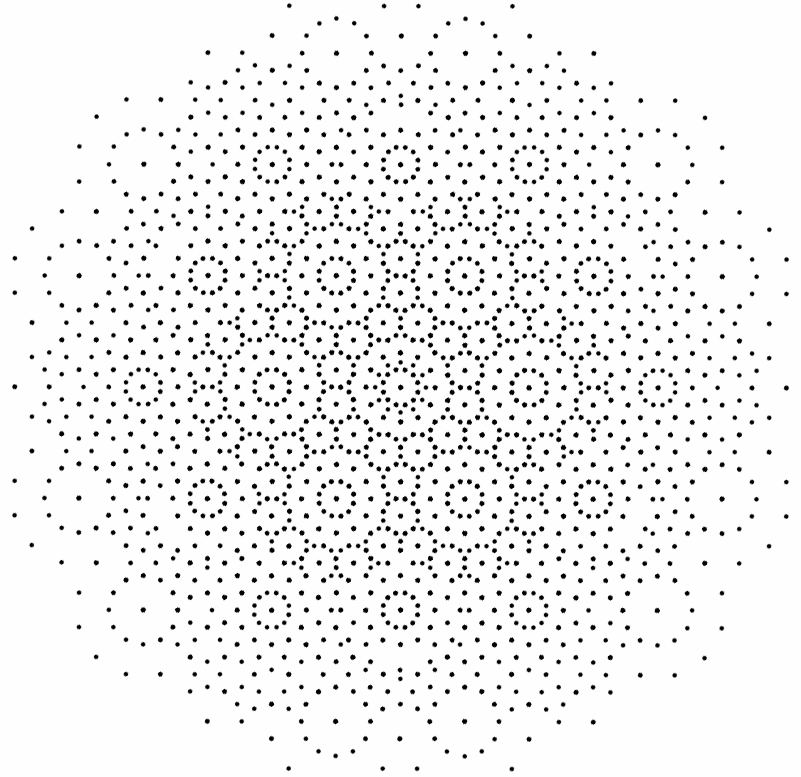
x=(2-4/√3 , 0 , 1-1/√3 , 1-1/√3 , 0 , -1 , 1 , 0 )
y=( 0 , -2+4/√3 , -1+1/√3 , 1-1/√3 , 0 , 1/√3 , 1/√3 , -2/√3 )
Rectification of E8 is a process of replacing the 240 vertices of E8 with points that represent the midpoint of each of the 6720 edges. In this projection, there are overlaps which are indicated by different colors in the color-coded WP image linked above.
The image below is an overlay of the above images highlighting the 12*(9+3+26+7)=540 points that are not overlapping:
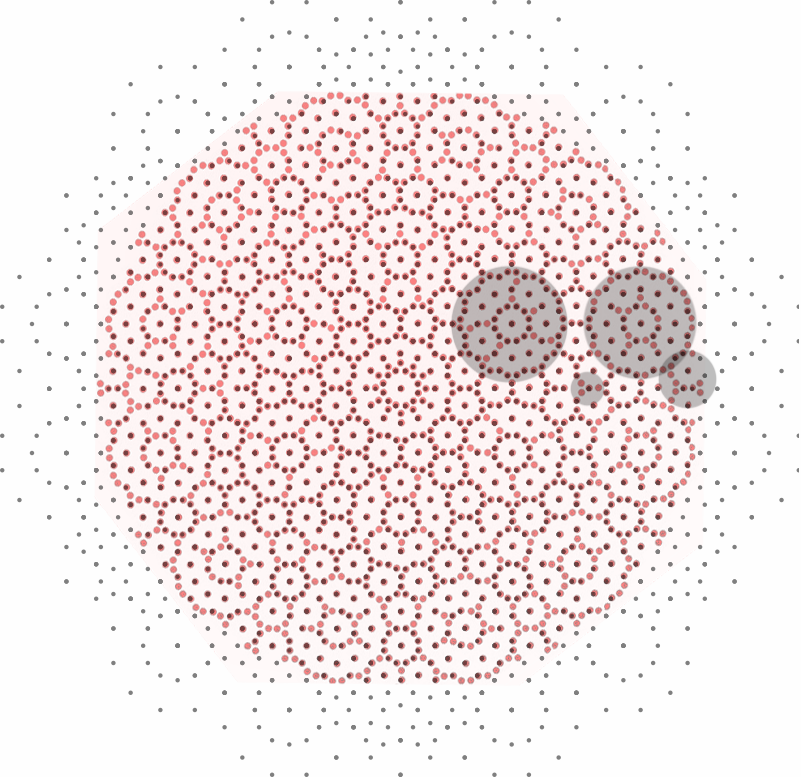
It is interesting to note that with a 30° rotation of my projection, the missing overlaps are reduced to 12*(15+2)=204.

Given the paper’s explanation for the methods using E6 (720) with 6480 edges as a projection through a 4D 3-sphere window defined by q1 and q6, it may be insightful to study my projection basis for E8’s triality relationships with the Koca/Koc paper’s defined 4D 3-sphere.
For more information on why my projection basis is called the E8 Triality projection, see this post.

